Boston Children's Museum
308 Congress Street, Boston, MA 02210
617-426-6500
© Boston Children’s Museum 2025
Website Design by Jackrabbit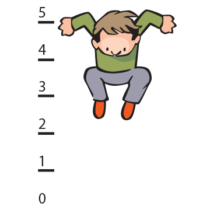
Gravity is an important scientific concept, but one that is difficult to grasp, even for adults. Having children use their own bodies to test gravity, and then compare how they would fare against gravity on another celestial body provides a great jumping off point for understanding that the effects of gravity are different in different parts of our solar system.
VIEW ACTIVITY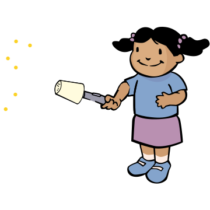
Constellations are pictures that people have imagined in the patterns of the stars, and they are familiar in some form or another to most children. It’s also fun to look for them at night…but why wait until night time? Creating homemade projections of these constellations is a fun way to connect to astronomy, and to engage in some basic problem solving and even practice some math. This activity is a good follow-up to Constellation Creation, from this curriculum.
VIEW ACTIVITY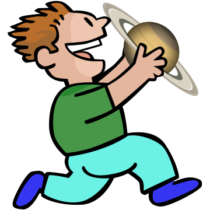
Our solar system is truly enormous. Developing a sense of just how enormous is difficult, however. A good starting point to this understanding is to have children explore the relative distances across our solar system, and this game provides a fun way to do that. This is also a great activity for learning about the major bodies in our solar system, and to practice measuring and estimating.
VIEW ACTIVITY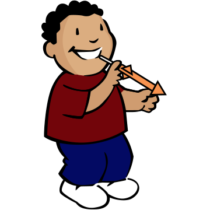
Engineering activities give kids a chance to develop problem solving and observation skills, to work with interesting and engaging tools and materials, and to learn how to work as a member of a team. In this activity, children get a chance to do all that—and to launch their creations into the air! This is a simple, but very fun way to connect children to the science and engineering that NASA aerospace engineers, rockets scientists, and others use when they design and create the huge rockets that we send into space.
VIEW ACTIVITY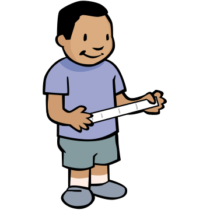
Our solar system is truly enormous. Developing a sense of just how enormous is difficult for almost anyone, let alone children. A good starting point to understanding how vast the universe is, is to have children explore the relative distances across our solar system, and this activity provides a fun first step in that understanding. This is also a great activity for learning about the major bodies in our solar system, and to practice measuring, estimation and fractions.
VIEW ACTIVITY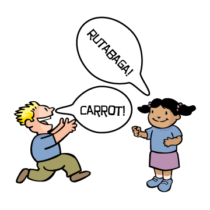
Math is a natural subject to fit into your everyday work with your students. The Mixing in Math curriculum, created by TERC (click here to visit the website), contains lots of great math activities that require little or no materials, and are easy to fit into what you are already doing. This activity, which is adapted from the Mixing in Math curriculum, helps children practice categorizing and data collection.
VIEW ACTIVITY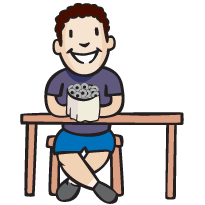
Children are inundated with advertisements practically as soon as they are born. Many of these advertisements can be tricky…or even misleading. If we would like our children to grow up to be savvy consumers, we need to help them develop independent thinking skills, and have them practice being thoughtful about the choices that they make. This activity encourages children to compare different brands of products, design scientific tests to compare those products, and determine which of them is the best buy.
VIEW ACTIVITY
Now that you have tested one product…how about testing some more? Children are inundated with advertisements practically as soon as they are born. Many of these advertisements can be tricky…or even misleading. If we would like our children to grow up to be savvy consumers, we need to help them develop independent thinking skills, and have them practice being thoughtful about the choices that they make. This follow-up to the Consumer Reports Jr. activity encourages children to compare different brands of products, design scientific tests to compare those products, determine which of them is the best buy, and share the results with their peers, family and community.
VIEW ACTIVITY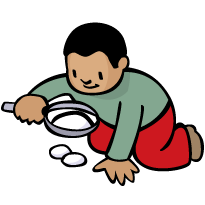
Spring is a time of rebirth and renewal—and eggs! Many animals lay and incubate eggs in the spring, and in some cultures spring is a time in which kids paint, hide and eat lots of eggs. This makes it a great time to not only take a close look at eggs, but also to experiment with some of the things we can do with them. This activity is the first in the Incredible Egg series of activities, which are designed to be done during the Spring—start your students off with this and other “egg science” activities, then move on to egg art, and finally take the Egg Drop Challenge!
VIEW ACTIVITY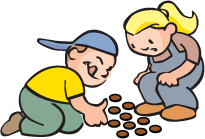
Math is a natural subject to fit into your everyday work with your students. The Mixing in Math curriculum, created by TERC (click here to visit the website), contains lots of great math activities that require little or no materials, and are easy to fit into what you are already doing. This activity, which is adapted from the Mixing in Math curriculum, helps children practice counting forwards and backwards, and practice adding and subtracting. It is also a great logic game for older children.
VIEW ACTIVITY